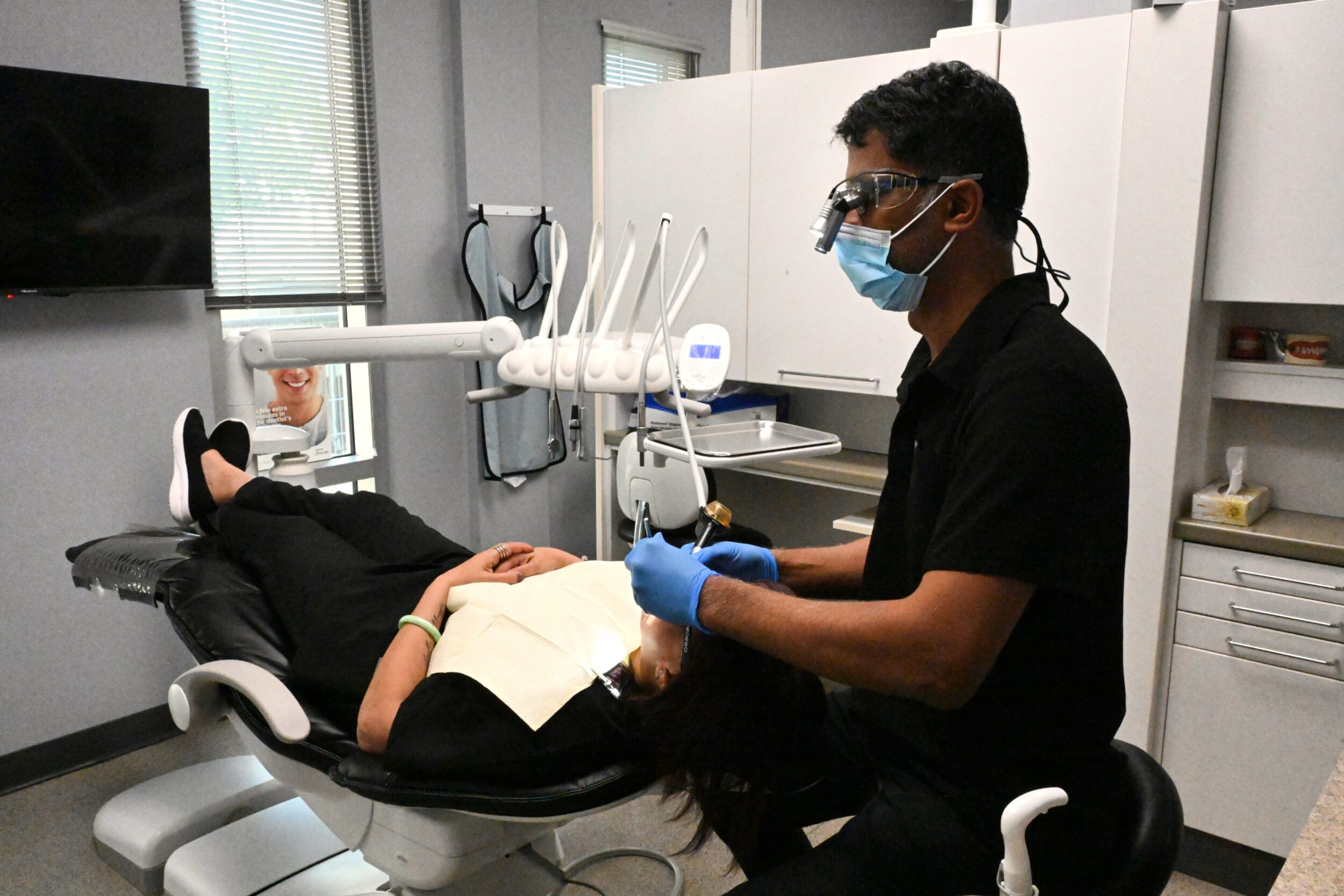Cracked Tooth
A common dental problem is a cracked or fractured tooth. Since people are retaining their natural teeth longer (as a result of advances in dental technology), cracked teeth are more likely to occur. There are a number of reasons why teeth may crack, including biting on hard objects, trauma, grinding, and clenching. As a result of all of these behaviors, teeth are put under additional strain, which increases their susceptibility to cracking.
In the event of a cracked tooth enamel, pain may become momentarily debilitating. If no pressure is applied to the crack, there may be no discomfort. It is important to note, however, that as a cracked tooth performs a biting action, the crack will widen.

As a result, the pulp and inner workings of the tooth become exposed, resulting in painful irritation. When the pressure on the crack is released again, the two parts fuse back together, and the pain subsides as soon as the crack is closed back up. When left untreated, the pulp becomes irreversibly damaged and constantly in pain as a result of irreversible damage. If the pulp of the tooth is infected, it can have a detrimental effect on the bone and soft tissue surrounding it.
The following are some of the symptoms of a cracked tooth:
- When eating, there is an unexplained feeling of pain.
- Sensitivity to warm and cold foods.
- There is pain that has no apparent cause.
- Inability to pinpoint the exact location of the pain that is causing the discomfort.
What types of cracks may affect the teeth?
It is possible to crack a tooth in a variety of ways. Treatment options will depend on the type of crack. If the crack is not too deep, root canal therapy can often be performed and the natural tooth can remain in the mouth. In other cases, the tooth is too badly damaged and must be extracted.
The following are some of the most common types of cracks:
Oblique supragingival cracks – The cracks are only visible on the crown of the tooth and do not extend below the gum line. In most cases, the affected part of the tooth will eventually break off. There will be little pain caused by this procedure, as the pulp of the tooth (which contains the nerves and vessels) will remain unaffected.
Crazes – Generally, these are small vertical cracks that do not pose a threat to the teeth. Most dentists consider these scratches to be a normal part of the tooth’s anatomy. In most cases, a craze does not require treatment for health reasons, but a wide range of cosmetic treatments are available to reduce its negative aesthetic effects.
Oblique subgingival cracks – It is common for these cracks to extend beyond the gum line, and often beyond where the jawbone begins. When a piece breaks off, it will usually remain attached until it is removed by the dentist. Subgingival cracks can be extremely painful and may require a combination of periodontal surgery (to expose the crown) and endodontic treatment to restore the teeth.
Vertical furcation cracks – The cracks are caused by the separation of the roots of the tooth. It is almost always the case that this type of crack affects the nerve of the tooth. Root canal therapy and a crown are usually sufficient to save a tooth because it will not usually separate completely.
Vertical apical root cracks – These cracks usually occur at the tip of the root (apex) of the root. Even though the tooth does not require extraction from a dental perspective, many patients request an extraction because of the intense pain they are experiencing. A root canal may alleviate the discomfort for a period of time, but in most cases, teeth affected by such cracks will need to be extracted.
Oblique root cracks– The surface of the tooth is not affected by these cracks. It is important to remember that the damage is not visible above the gum line and usually is not visible below the jawbone. It may be possible to treat the fracture with root canal therapy depending on how close the fracture is to the surface of the tooth. After sustaining such a fracture, the only option for treatment is almost always to extract the bone after it has been fractured.
What is the treatment for cracks in the teeth?
Cracked teeth can be classified into a number of different types. In some cases, these can only be viewed using X-ray machines, while in others, they are visible to the naked eye. Whenever the root of the tooth is affected, root canal therapy is the most appropriate treatment option. Gutta-percha will be used to fill the resulting space after the pulp, nerves, and vessels of the tooth have been removed. In order to stabilize the tooth, a dental crown or dental filling will be added, and the tooth will continue to function normally.
A dentist will perform an extraction when the crack is too severe to save the tooth. A number of restorative options are available in this case, including bridges, dental implants, and partial dentures. These structures are all capable of restoring biting, chewing, and speaking functions.
Please contact your dentist if you have any questions or concerns regarding cracked teeth.